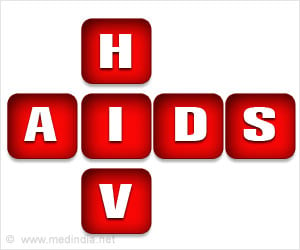There is no AIDS cure or vaccine. ART cocktails suppress the virus, enabling people to live long, though the drugs are expensive and can have side effects.

‘Global efforts have had less impact on the incidence of new infections than on HIV mortality. Ending the AIDS epidemic by 2030 will require a dramatic change in how HIV prevention is pursued.’





The report paints "a worrying picture of slow progress in reducing new HIV infections," according to lead author Haidong Wang from the Institute for Health Metrics and Evaluation (IHME) at the University of Washington, Seattle. This could be worsened by "stagnating" funding for HIV/AIDS programmes and medicines. "Therefore, a massive scale-up of efforts from governments and international agencies will be required to meet the estimated $36 billion (33 billion euros) needed every year to realise the goal of ending AIDS by 2030," IHME director Christopher Murray said in a statement. Over the past 15 years, countries have contributed $110 billion in "development assistance" for HIV/AIDS programmes.
Today, there are some 38.8 million people living with the AIDS-causing virus, a steady increase from 28 million in 2000 thanks to the advent in 1996 of life-prolonging antiretroviral therapy (ART). Annual AIDS deaths have declined from a peak of 1.8 million in 2005 to 1.2 million in 2015. There is no AIDS cure or vaccine. ART cocktails suppress the virus, enabling people to live long lives, though the drugs are expensive and can have side effects.
- 'Dramatic change' required -
Use of antiretrovirals, for long the preserve of the rich, grew from 6.4 percent of infected men in 2005 to 38.6 percent ten years later, and from 3.3 percent to 42.4 percent for women over the same period, the study found.
Advertisement
In spite of advances, most countries are still far from achieving the UNAIDS goal of ensuring that by 2020, 90 percent of infected people will know their status, and 90 percent of those will receive ART. In 2015, 41 percent of HIV-infected people received ART, said the report. The picture varied vastly between countries and regions.
Advertisement
In Europe, the highest rate of new infections was in Russia (57,340) and Ukraine (13,490). "Global efforts have had less impact on the incidence of new infections than on HIV mortality," concluded the report. "Ending the AIDS epidemic by 2030 will require a dramatic change in how HIV prevention is pursued."
Source-AFP














